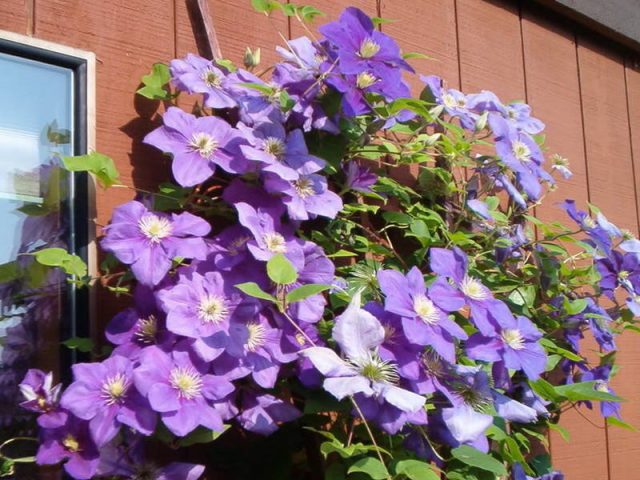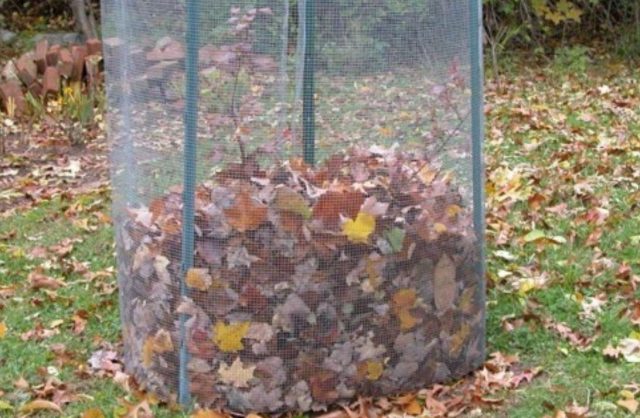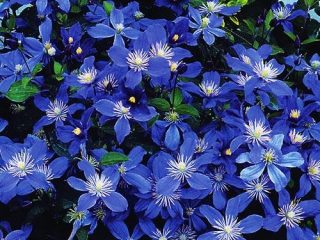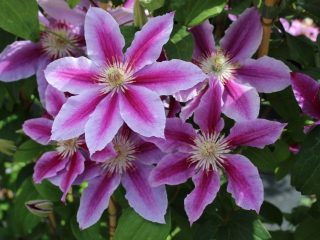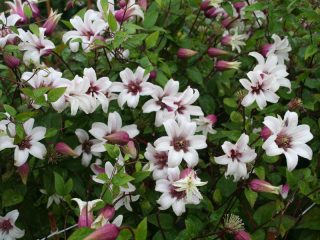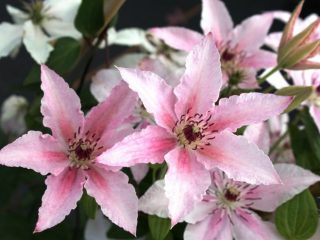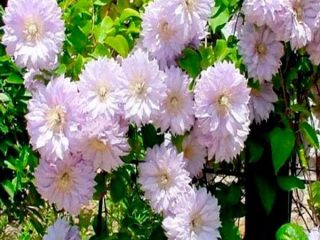Content
Clematis are herbaceous perennials found in the temperate and subtropical zones of the Northern Hemisphere. There are about 300 types of clematis that differ significantly from each other. The General Sikorsky variety was bred in Poland in 1965. It differs from others in its bluish purple colors. Photos and descriptions of clematis General Sikorsky are presented in the article below.
Description of clematis General Sikorsky
Clematis General Sikorsky is one of the most widespread and popular varieties in the world. It got its name in honor of General Vyacheslav Sikorski, who during the Second World War was at the head of the Polish Air Force. The breeder of the variety was St. Franczak.
According to the description, the shoots of General Sikorsky clematis are powerful and long, reaching 2-3 m. The leaves are colored dark green. The structure of the foliage is dense, leathery.
A lot of flowers are formed, the flowering zone is extensive. The flowers are large (from 15 to 20 cm), lilac-blue in color, consist of six wide sepals. The anthers of the flowers of General Sikorsky are yellow.
This variety blooms profusely and for a long time. Flowering begins in June and lasts until September (under suitable conditions).
Clematis trimming group General Sikorsky
In order for the flowers to please with their appearance and abundant flowering, attention must be paid to the correct sanitary pruning of the plant. There are three groups of clematis pruning, in the first year of growth, pruning is carried out for all plants in the same way, and from the second, it is necessary to take into account the breakdown into groups.
The clematis trimming group General Sikorsky is the second, that is, weak. The best time for the procedure is late autumn. The branches are cut at a level of 1-1.5 m from the ground. If rejuvenation is needed, it is allowed to trim a little more. All broken and weak shoots are removed completely.
Planting and caring for clematis General Sikorsky
The General Sikorsky variety can be planted in sunny or semi-shaded areas. Partial shade for cultivation is preferable as the flowers will be brighter and the flowering time will increase. In sunny areas, the flowers fade and become pale, the flowering period is reduced.
The soil in the area allocated for the cultivation of clematis should be fertile, light. Sandy loam and loamy soils are best suited. The acidity of the soil can be both slightly alkaline and slightly acidic; the plant tolerates minor deviations of this indicator well.
Clematis do not like the wind, so they are planted in a cozy corner of the garden, protected from drafts. The distance from the fence or brick wall of the building to the clematis bushes General Sikorsky should be at least 0.5 m. It is better not to plant the culture along the metal solid fences, since the metal heats up excessively and worsens the condition of the plants. Solid structures interfere with natural air exchange.
Planting is done in spring or autumn. Before rooting, the plant must be shaded. Before planting, the roots of the seedling are soaked in water or Epin's solution for 5-8 hours.
The standard size of the planting hole is 60x60 cm, the depth is 50-60 cm. If groundwater occurs in the area close to the surface, a drainage layer is poured into the bottom of the hole. To do this, use broken bricks, gravel, gravel.
To fill the pit, a nutritious soil mixture is prepared, consisting of the following components:
- compost - 1 part;
- humus - 1 part;
- land - 1 part;
- sand - 1 part;
- superphosphate - 150 g;
- dolomite flour - 400 g.
The mixture is poured into a hole in the form of a hill, on which the roots of the seedling are carefully laid out. The root collar is slightly deepened into the soil. The seedling is watered.
Clematis belongs to climbing plants, therefore it needs support. It can be planted around a gazebo or made a metal arch that resembles a vineyard. The seedling is tied up, in the future, the plant itself will find support and will cling to it.
The distance between the seedlings is maintained at the level of 1.5-2.0 m, so the plants will not have competition for nutrition and the place of growth. General Sikorsky does not tolerate overheating of the root zone, so the soil is mulched and annual flowers are used for shading.
Plant care consists of watering, fertilizing, pruning and preparing for winter.
Watering
On hot days, water at least 3 times a week. The procedure is carried out in the evening. It is advisable to moisten not only the root circle, but also irrigate the foliage. If watering for clematis is insufficient, the flowers begin to shrink, and the bush stops flowering ahead of time.
Top dressing
General Sikorsky needs additional fertilizing in the spring and summer. Fertilizers are applied once a month, while it is desirable to alternate mineral and organic substances.
Saplings planted this year do not need additional fertilizing.
Shelter for the winter
The degree of shelter and the timing of this event depend on the climatic zone. Shelter works are carried out in dry weather, shortly before the onset of the first frost.
The bushes of General Sikorsky tolerate wintering under cover well, but in spring they can suffer from damping. Therefore, with warming in the spring, the shelter is removed.
Reproduction
Reproduction is possible in several ways:
- cuttings;
- dividing an adult bush;
- layering;
- seeds.
Each method has its own advantages, so the choice is up to the gardener.
Diseases and pests
Clematis General Sikorsky may suffer from fungal diseases:
- gray rot;
- brown spotting;
- rust;
- fusarium;
- withering.
Shoots affected by the fungus are cut off and burned away from the site. The soil is treated with a manganese solution or a copper-soap emulsion.
For preventive purposes, the bushes are sprayed in early spring and autumn before sheltering for the winter with Fundazol.
Insects can harm clematis General Sikorsky:
- spider mite;
- aphid;
- rootworm nematode.
To combat parasitic insects, special preparations are used.
Conclusion
Photo and description of clematis General Sikorsky will allow gardeners to choose a variety for planting. The culture is used for vertical gardening. Fences, gazebos, trellises are decorated with clematis.
